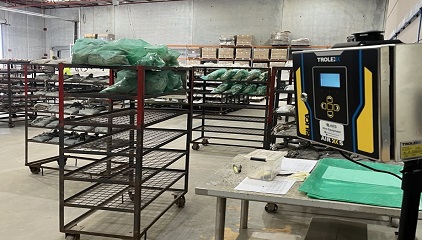Enhancing Protection Against Silica Exposure for Workers with Real-time Monitoring
Understanding Your Obligations
Businesses have a critical responsibility to protect workers from the harmful effects of silica dust exposure. Silica dust, particularly respirable crystalline silica (RCS), poses significant health risks when inhaled. Prolonged exposure can lead to severe respiratory diseases, including silicosis, lung cancer, and chronic obstructive pulmonary disease (COPD).
Engineered Stone Ban in Australia
Recognising the severe risks associated with engineered stone, Australia has banned the manufacture, supply, processing, and installation of engineered stone, effective from July 1, 2024. This material often contains more than 90% silica, posing a particularly high risk to workers. The ban aims to protect workers from the rapid disease progression and high mortality rates linked to silicosis from engineered stone products.
Materials Containing Silica
Silica is not limited to engineered stone; it is also present in many other materials, such as*:
- Granite (25-40% silica)
- Shale (22% silica)
- Natural sandstone (up to 67% silica)
- Aggregates, mortar, and concrete
- Bricks, tiles, and cement
- Asphalt and manufactured timber
- Drywall and some plasterboards?
*Examples from Safe Work Australia
Importance of Air Monitoring
To comply with the Model Code of Practice: Managing the risks of respirable crystalline silica from engineered stone in the workplace, air monitoring is essential. This practice helps identify the presence of silica dust in the workplace, ensuring that control measures effectively minimise worker exposure. Regular air quality assessments, required at least every 12 months, combined with appropriate protective measures, are vital for maintaining a safe working environment and safeguarding workers' health.
Businesses must adopt a combination of control measures, including engineering controls (e.g. ventilation systems), administrative controls (e.g. work practice changes), and personal protective equipment (PPE). Implementing these measures ensures a comprehensive approach to managing the risks associated with silica dust?.
By understanding and adhering to these guidelines, businesses can significantly reduce the risk of silica dust exposure, protecting their workers and ensuring compliance with regulatory standards.
Please consult an Occupational Hygienist if you’re unsure how to conduct air sampling tests. You can find a list of qualified professionals from the Australian Institute of Occupational Hygienists (AIOH) here.
Role of real-time Monitoring
To further enhance safety real-time monitoring devices should be considered. Periodic air sampling is essential in providing detailed result data, improving compliance and should always be used as the baseline for understanding the level of silica present. However, air sampling is only required every 12 months, changes that occur during that period will most likely not be detected, potentially leaving those working in that environment at risk of exposure.
The AIR XS Silica Monitor offers a cutting-edge solution for real-time silica monitoring. Unlike traditional monitoring methods, the AIR XS uses patented Optical Refraction Technology (ORT) to detect and distinguish RCS in real time. This allows businesses to:
- Instantly Identify Hazardous Conditions: The AIR XS provides immediate alerts when RCS levels exceed safe thresholds, enabling prompt action to mitigate exposure.
- Optimise Protective Measures: Real-time data facilitates intelligent use of PPE, agile process adjustments, and effective deployment of ventilation and extraction systems.
- Validate Controls: Deploying real-time monitoring equipment will help to validate control measures in place by continuously providing feedback on their effectiveness.

By integrating the AIR XS into occupational health and safety programs, alongside regulatory air sampling, businesses can significantly reduce the risk of silica exposure, safeguard their workforce, and align with regulatory standards, ultimately fostering a safer and healthier working environment.
We offer the AIR XS real-time silica monitor from Trolex. The area monitor is available to purchase or hire with solar power and telemetry options for remote environments.
If you would like to book in a demonstration of the AIR XS real-time silica monitor please email sales@aesolutions.com.au or to read more about the independent testing for the AIR XS you can request a copy from Trolex here.